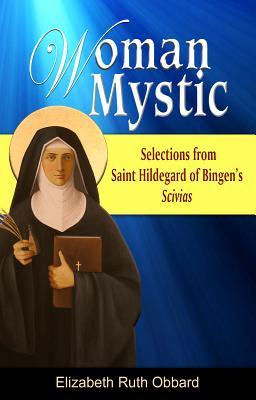
|
Posted January 28, 2013
Book: Woman Mystic: Selections from Saint Hildegard of Bingen's Scivias Author: Elizabeth Ruth Obbard New City Press of the Focolare. Hyde Park, NY. 2012. Pp. 71 An Excerpt from the Introduction:
Hildegard of Bingen (1098-1179), the newly declared Doctor of the Church is a woman of such formidable accomplishments that one wonders if there was anything she did not master! Hildegard composed music and poetry, produced plays for her community, wrote works on natural science, medicine, theology and hagiography. She also travelled around on preaching tours upbraiding clergy and laity alike, governed her sisters in their day-to-day lives, and kept up an extensive correspondence with the most prominent ecclesiastical and political figures of her time. And she did this within the context of her regular life of prayer, study and work within the Benedictine monastery she founded. She has been called the first woman theologian in the Church and truly merits the title. Hildegard demonstrates how the monastic life offered women great opportunities for education and the development of natural talents. She is always, and primarily, a Benedictine nun, faithful t the life she has chosen and to her sense of vocation to share what she has received from God. She has a visionary breadth of interest and involvement in both the Divine and natural worlds — a true polymath. Nothing seems to escape either her inner or outer gaze, where everything is directed to the honor and glory of God, as she understands Him. Hildegard is a woman of grace, of vision, of service, a prophet and teacher par excellence. A woman worth getting to know so as to share something of her insights, even though these belong to a time and place very different from our own. An Excerpt from the Book: How secular and spiritual people are divided into four categories The ways of living on earth are divided into those concerned with spiritual things and those concerned with secular life; and each way is divided into four categories. God gave man the great power of reason that, inspired by the Holy Spirit, he might know these parts in himself after the pattern of the four elements. The four parts pertain to both secular and spiritual life. In secular affairs there are: lesser and greater nobles, servants and followers. In spiritual matters there are: the excellent and the superior, the obeyers and the enforcers. No one may seize, steal or buy spiritual or secular offices, for I establish them and want them to be used wisely and well. And by the ordinance of Providence these human distinctions exist forever. There are three kind of People There are three divisions between secular people: Rulers. Those free from the bonds of servitude. Common people, subject to their governors. Those who have spiritual authority and those appointed to govern should work in harmony and faith according to God's will, so that subjects are held in check. But there must be a thoughtful justice in secular life, for the governors and those governed must touch one another in their joint labor and in a single-minded devotion of childlike innocence. Table of Contents: Hildegard declares the truth of her visions Creation and the fall Vision of the Trinity The Church, bride of Christ and mother of the faithful. The mystical body of the Church. Christ's sacrifice and the Church. The history of salvation symbolized by a building. The figures of heavenly love, discipline, modesty, mercy and victory. The zeal of God. The stone wall of the old law. The pillar of the Trinity. The symphony of the blessed For further reading. |
|
